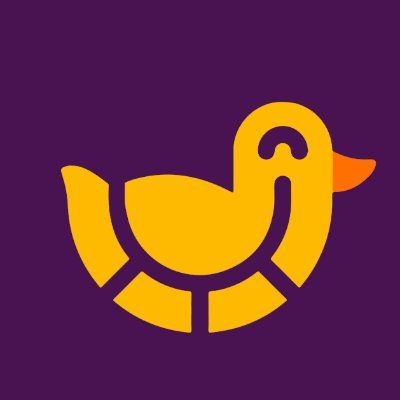PayPal Revenue and Growth Statistics [2024]
Since its establishment in 1998 by Peter Thiel, Ken Howery, and Luke Nosek, PayPal has grown at an alarming rate. In almost 25 years of operation, PayPal hasn’t been dethroned as the number one contender in this fast-paced, competitive environment.
But what factors have led to PayPal’s success, and what does the future hold for this digital payment giant? In this article, we will look at some of the most important PayPal stats, facts, and figures regarding PayPal revenue, market share, and growth.
Highlights of the Article
- PayPal recorded 19.3 billion transactions in 2021.
- PayPal’s total payment volume for the second quarter of 2021 was approximately $311 billion.
- In 2020, PayPal managed to generate $21.4 billion in revenue.
- In the fourth quarter of 2021, PayPal’s net income was $801 million.
- In the second quarter of 2022, PayPal’s consumer penetration stood below 50% in the core developed markets.
- PayPal is available in more than 200 countries and territories.
- 93% of respondents from Germany said they used PayPal for online purchases from August 2020 to August 2021.
- PayPal’s One Touch sign-in option is used by 80 million users.
- On September 16, 2022, PayPal stocks closed at $94.
PayPal Market Share, Revenue, and Growth
Although PayPal is no longer alone in the digital payment industry, and big names such as Apple and Google are attracting more and more users, it continues to dominate the online payments market.
Let’s look at the stats and figures that illustrate precisely how much money the company has been making, where it stands in terms of market share, and what PayPal’s growth looks like.
1. On September 16, 2022, PayPal stocks closed at $94.
(Yahoo! Finance)
This is a significant decrease compared to September 16, 2021, when PayPal stocks closed at a high of $282.97.
2. PayPal generated $25.3 billion only in 2021.
(Business of Apps)
Since 2010, when PayPal’s revenue was $3.5 billion, the numbers have kept going up for 10 years. The growth has been steady, reaching the $10 billion milestone in 2016 and doubling that in 2020. In 2021, PayPal’s annual revenue was higher than Mastercard’s ($18.9 billion), showcasing PayPal’s growth and ability to overtake a decades-old financial network.
3. PayPal’s revenue for 2022 (last 12 months ending June 30) was $26.4 billion.
(Macrotrends)
This is the best year for PayPal in the past four years, and each year was marked by a significant increase in revenue.
4. In 2021, PayPal’s net income was $4.1 billion.
(Business of Apps)
This is somewhat less compared to 2020 but around 70% higher in comparison to 2019 profits. PayPal’s income statement from 2021 shows that the net numbers haven’t been rising as steadily as they have for the overall annual revenue, but the profits remain significant.
5. PayPal Holdings, Inc. recorded 19.3 billion transactions in 2021.
(Business of Apps)
This online payment provider has been used more often in the past year than ever, as PayPal data shows that 25% more transactions were completed in 2021 compared to 2020. In that sense, each year was better than the previous for PayPal, as the number of transactions was higher each year, from 2013 to 2021.
6. For the quarter that ended June 30, 2022, Paypal Holdings’ revenue was $6.8 billion.
(Macrotrends)
Even though this quarter didn’t meet the analysts’ projections that the numbers would go as far as $7.02 billion, this still means that the company is showing growth, as these numbers tell us that there’s an increase of 9.11% year-on-year.
7. PayPal’s total payment volume for the second quarter of 2021 was around $311 billion.
(Statista)
This amounts to 41% in terms of year-on-year growth, which was generated thanks to nearly four billion transactions during that time.
8. For the first quarter of 2022, PayPal’s net income amounted to $1.1 billion.
(Statista)
This represents an increase compared to 2020’s first quarter (the company reported a profit of $84 million), but when it comes to the previous quarter, this is a decrease. PayPal’s profit from that quarter was $1.6 billion.
9. In 2020, PayPal managed to generate $21.4 billion in revenue.
(Business of Apps)
Over the years, PayPal recorded steady growth, and eventually went over $20 billion in 2020. This was the same year when PayPal decided to acquire Honey, which cost it over $4 billion. To this day, this is PayPal’s largest acquisition, and it seems to have contributed to its overall success.
10. As of September 2022, PayPal boasts a 41.87% market share of the online payment processing industry.
(Statista)
When PayPal was introduced, it hardly had any competition in the market. However, more and more similar solutions have been developed, reducing PayPal’s domination in this industry. Its two-fifth share is threatened by companies such as Stripe, Shopify Pay, and Amazon Pay.
11. In the fourth quarter of 2021, PayPal’s net income was $801 million.
(Statista)
PayPal’s success was partially aided by the COVID-19 pandemic, as more people decided on digital purchases and contactless forms of payment. This convenience has helped it remain prevalent even after the total reopening of brick-and-mortar businesses that survived the initial lockdowns.
12. PayPal reported a market cap of $108.4 billion in September 2022.
(CompaniesMarketCap.com)
This puts PayPal in 110th place among the most valuable companies in the world. Market capitalization refers to the market value of a firm’s outstanding shares and is one of the indicators used for assessing the company’s overall worth.
PayPal Usage Statistics
At the beginning of the digital revolution, PayPal Holdings, Inc. decided to attract as many consumers as possible by offering an alternative way of sending and receiving money and purchasing goods and services online.
Today, a vast number of businesses accept PayPal, and many people and merchants around the globe use it to quickly transfer money. Let’s see what the numbers tell us when it comes to PayPal users around the world.
13. 83% of Americans said they used PayPal in the past 12 months.
(Statista)
This statistic from April 2021 to March 2022 shows that PayPal is by far the most used online payment method. It’s followed by Venmo, Apple Pay, and Google Pay. Interestingly, Venmo also belongs to PayPal, confirming its strong dominance in the market.
14. In the second quarter of 2022, PayPal’s consumer penetration stood below 50% in the core developed markets.
(PayPal)
The following countries comprise PayPal’s most crucial playing field: the US (35%), Germany (42%), the UK (44%), Italy, France, and Spain (19%), Canada (26%), and Australia (39%).
15. There were 429 million active PayPal accounts in the first quarter of 2022.
(Statista)
Daily active users differ between countries. For example, the UK had slightly more PayPal users than Germany, and a significantly higher number of users than 19 other European countries.
16. PayPal is available in more than 200 countries.
(PayPal)
Users across the Americas, Asia Pacific, Europe, and Africa can have PayPal accounts, and transfer funds in 25 currencies.
17. There are currently 34 million PayPal merchant accounts in use.
(SEC)
According to the US Securities and Exchange Commission report on PayPal Holdings from December 2021, the payment solutions company had 426 million active accounts, out of which 34 million were merchant accounts and 392 million were consumer accounts.
18. PayPal’s One Touch sign-in option is used by 80 million users.
(Business of Apps)
Besides making it easier to log in without using your email and password, PayPal came up with the One Touch feature to enhance the security of its consumers while using the service.
19. 93% of respondents from Germany used PayPal for online purchases between August 2020 and August 2021.
(Statista)
Regarding eCommerce payment and PayPal usage, the United States did not rank near the top – it was in 10th place. The first five countries that used PayPal the most were all European.
PayPal is most popular in the UK and Germany, where most people used PayPal for purchases between August 2020 and August 2021. Although the pandemic increased its popularity, as it did everywhere else, this service was widely adopted in these countries long before COVID-19.
20. In the United States, 22% of online transactions are completed via PayPal.
(Statista)
PayPal is one of the most popular payment methods in the US, and the company’s apps have reached nearly half of the US’s mobile audience. Moreover, not only do big brands and retailers accept it, many casinos now list PayPal as a payment method, too.
Takeaway
As we can see, PayPal is a top-rated payment solutions provider with a lot of users all around the world. The company is constantly expanding and introducing new features to make its service more convenient and secure for consumers. One new possibility is the sending and receiving of Bitcoin, Ether, and Litecoin. So if you use PayPal, it might be a good idea to learn more about cryptocurrencies and the options they present.
Although its competition is strong, PayPal is likely to grow further in the future as its team is highly focused on keeping up with current trends, and the company has become big enough to buy out most of its competition.
FAQ
What is the annual revenue of PayPal?
PayPal Holdings’ revenue for 2022 amounted to $26.4 billion for the 12 months ending June 30 of that year.
What is PayPal Credit?
PayPal Credit is a reusable line of credit you can use to pay for your purchases on PayPal. It’s offered by Synchrony Bank.
Where does most of PayPal’s revenue come from?
Most of the money PayPal makes comes from the fees this provider charges on every transaction.
What is PayPal’s competitive advantage?
Maybe the most significant competitive advantage of PayPal lies in the fact that it’s broadly accepted in online payments. According to the company, PayPal account holders are more likely to proceed with a purchase if a business accepts PayPal as a payment method.
 BC.Game
BC.Game  BitStarz
BitStarz  Ducky Luck
Ducky Luck  Red Dog Casino
Red Dog Casino